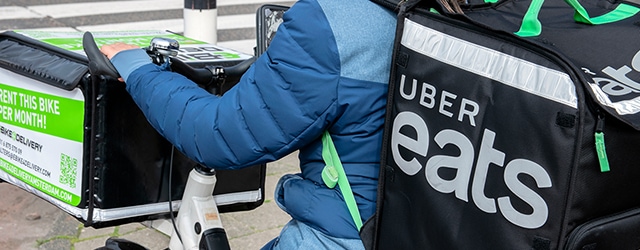Uber could end up being the largest-ever tech IPO or it could be a letdown like Lyft.

As the lackluster debut of ride-sharing service Lyft casts a shadow over Uber’s upcoming initial public offering (IPO), some observers take a long-term view on the future of ride-sharing ortransportation network companies (TNCs).
Lyft is the first of the major TNCs to go public as several high-profile tech “decacorns” (start-ups valued over $10 billion) look to list in 2019. The company’s listing on the Nasdaq Global Select exchange is being treated as a bellwether for the debut of its much larger rival, Uber.
According to Reuters, Lyft’s offering was oversubscribed ahead of its listingas investors clamored to take part in the$23 billion IPO,the largest tech IPO since Snap in 2017. But in a dismal first day of trading, the firm saw its share price fall 12% from its initial price of $72 before closing at $69.01.
Investor sentiment was not helped by the fact both Lyft and Uber both faced driver strikes over pay and conditions on the day of Lyft’s offering.
A week after its IPO, Lyft’s stock is still trading below its initial listing price. Now all eyes are on Uber, which could end up becoming the biggest ever tech IPO with a $120 billion potential valuation. Uberreported$3 billion revenue in Q4 2018—a 2% increase on the same quarter last year—but sizable operating costs saw the company’s net losses hit $865 million for the same period.
Uber has spent much of its revenue on out-muscling off ride-sharing rivals like Lyft and Ola, both of which are backed by Japanese telecoms behemoth Softbank. With its food delivery service, Uber Eats, the company is fighting a war on two fronts as it competes with companies like GrubHub and DoorDash for market share.
Daniel Sperling, founding director of the Institute of Transportation Studies at the University of California and author of Three Revolutions, tells Global Finance that technological impediments stand in the way of TNCs reaching their fullpotential.
“When [ride-sharing companies] get vehicle automation there is an almost unlimited market potential because it will bring the cost of the rides down so low, market share will increase dramatically, “ he says. “The question is when will that happen and there is still uncertainty about buta lot of the market valuation is based on is that future.”
For both Lyft and Uber, profitability is still an aspirational goalas the companies look to raise capital to develop proprietary technology, fend off competition and battle against legal barriers. The question is whether Uber’s investors—among them Goldman Sachs, Morgan Stanley and BlackRock—believe this strategy will allow the company to grab enough market share to turn a profit. Another avenueUber may explore is going beyond ride-sharing and moving into automation.
“[The technology] will be disruptive to many industries,” adds Sperling. “It will be disruptive to the taxi industry, disruptive for the automotive industry. It will disruptive for the repair industry, the insurance industry, and the transit industry.”



